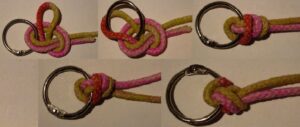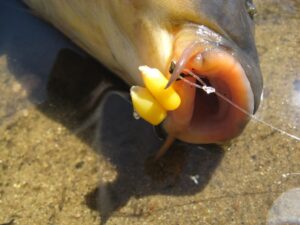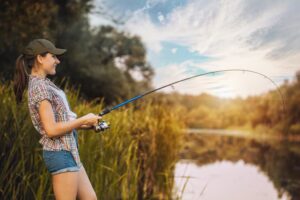Spinning: From Equipment to Lure Action, Everything You Need to Know

Fishing with lures, or spinning, is an exciting technique that tests the knowledge and skill of the fisherman. It involves the use of artificial lures to mimic the natural prey of fish, such as small fish or insects.
This approach is particularly suitable for fishing for different species of fish, including predators like pike, zander, as well as opportunistic salmonids and white fish like chub.

Basic Principles
Fishing with lures is based on the principle of deceiving the fish by presenting a lure that appears to be an easy prey. The choice of lure, its color, size, and animation are crucial to attract the attention of the fish. The goal is to stimulate the fish’s predatory instinct, making it believe that it is a real and accessible prey.
Choice and Use of Equipment
Fishing Rod
For lure fishing, the ideal rod must be carefully chosen. The length, action, and power of the rod are decisive. A rod of 3 to 4 meters (10 to 13 ft), with a semi-parabolic action and a power of 3 to 3.5 lbs, is generally suitable. This configuration allows for precise and powerful casts, suitable for different types of lures.
The Reel
The reel plays an equally important role. A light but robust fixed spool reel is often recommended. The reel’s capacity to hold enough line (about 820 ft or 250 m) and a precise brake are essential for effective retrieval and controlling the fish during the fight.
Fishing Line
The choice of line is also crucial. A high-quality nylon, resistant to abrasion and knots, is often preferred. However, fishing braids offer considerable advantages, including superior strength and better transmission of sensations.
The Leader
The use of a fluorocarbon leader is recommended for its discretion and resistance. This material is less visible underwater, which can make a difference in clear waters or when facing wary fish.
Accessories
High-quality swivels, rings, and clips are essential to ensure the strength of the assembly and to avoid unnecessary losses when capturing a fish.
Lure Animation Techniques
Animating the lure is an art in itself. The fisherman must know how to animate his lure to make it irresistible to the eyes of the fish. This can involve jerky movements, pauses, or more subtle animations, depending on the type of lure and the fishing conditions. The diversity of lures (soft baits, hard baits, spinnerbaits, spoons…) offers a wide variety of animation techniques to master.
Fishing Strategies
Identifying Spots
The success of lure fishing also depends on the fisherman’s ability to identify good spots. Predators are often found near underwater structures, weed beds, or areas with marked currents. Observing the environment, knowing the habits of the fish, and using technologies like sonar can greatly help in locating promising areas.
Adapting to Conditions
A good lure fisherman knows how to adapt to changing conditions. The color and type of lure may require adjustments depending on the brightness, clarity of the water, and activity of the fish. For example, more vibrant and colorful lures can be used in murky waters, while more discreet and natural lures are preferred in clear waters.
Conclusion
Lure fishing is a rich and varied practice, which requires patience, observation, and adaptability. It is a respectful and sporting mode of fishing, which provides unique sensations and unforgettable moments by the water.






